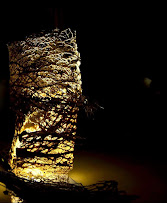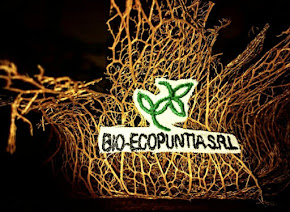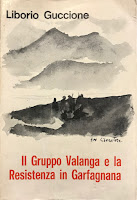Nella decima tappa del nostro tour scopriremo cosa si può ricavare dalla fibra di fico d'india il quale è facilmente coltivabile in Sicilia, grazie alle condizioni climatiche.
Per la cura di questa pianta bisogna suddividere il processo di lavorazione in più tappe, infatti la preparazione del terreno avviene nei mesi di dicembre-gennaio, nei mesi di marzo-aprile si interrano i resti della potatura, nei mesi estivi invece si ha la sarchiatura. La concimazione vera e propria però si ha nel periodo autunnale-invernale ed estivo per preparare la pianta alla produzione dell'annata successiva.In particolare dalla pianta del frutto si ricava una fibra legnosa che compone il cladodio.
Da qualche tempo, la fibra di fico d'india è stata impiegata anche nell'artigianato grazie alla trama complessa delle venature uniche e per il loro colore brillante.
Nella realizzazione dunque di nuovi elementi con un materiale
fragile, delicato e altamente originale, si considera il ricamo, come
supplemento alla componente legnosa trattata artigianalmente.
La superficie costituita da fori più o meno larghi, caratteristici per
ogni cladode, consente il passaggio dell’ago e la decorazione
successiva sul supporto.La storia del ricamo ha origini molto antiche. Partendo dall’Oriente
per raggiungere poi i territori occidentali, si riconosce un’evoluzione
lunga e contaminata. Le testimonianze sono prevalentemente
iconografiche ma vi sono frammenti autentici conservati presso
enti, conservatori di contesti antichi specifici, di tecniche e di
competenze.
Tra le testimonianze orientali, l’Egitto conserva la precisione
accurata delle tecniche di lavorazione come: il punto filza, il punto
erba, il punto croce semplice e orientale e il gobelin.
In Sicilia, l’arte di abbellire i tessuti, si affermò intorno all’anno
mille, con il dominio dei Saraceni e con il consolidamento della
tecnica di tessitura e di ricamo. Più precisamente il termine
“ricamo” deriva dall’arabo, da “lemma” raqm (racam) che significa
“segno, disegno”. La conformazione naturale delle venature lignificate, rende il
ricamo, un’attività laboriosa e ricercata che richiama la manifattura
tradizionale locale e la possibilità di rievocare mestieri antichi
perduti.
In particolare una ragazza aliese, si è dedicata alla realizzazione di cesti in fibra di fico d'india, in sostituzione
alle cassette o ai supporti in cartone per il trasporto dei frutti,e ciò rimanda alla rievocazione del patrimonio materiale e
immateriale di un paese. Da questa passione nasce però qualcosa di più grande, infatti in collaborazione con una docente universitaria dà vita ad un progetto denominato
"Bio-Ecopuntia" progetto per la valorizzazione di un materiale naturale per nuovi impieghi e
nuove forme e consiste nell’introdurre una strategia d’innovazione di prodotto e di
processo attraverso il riuso della biomassa vegetale.
L’opportunità di valorizzare una parte della pianta del ficodindia è determinata dalla
consapevolezza che vi sono potenzialità nelle componenti naturali, in particolare
negli scarti delle lavorazioni agricole, poiché attuatori di nuove applicazioni sia
artigianali che industriali. Ciò si configura nell’attivazione di un progetto sistemico
che, come la natura, non produce scarti ma ne costruisce un nuovo ciclo.
Il design sistemico si è posto il compito di dar vita a nuovi prodotti, a nuove
opportunità, attivando in ambito tecnico e tecnologico studi legati all’analisi delle
materie prime. L’opportunità di valorizzare una parte della pianta del ficodindia è determinata dalla
consapevolezza che vi sono potenzialità nelle componenti naturali, in particolare
negli scarti delle lavorazioni agricole, poiché attuatori di nuove applicazioni sia
artigianali che industriali. Ciò si configura nell’attivazione di un progetto sistemico
che, come la natura, non produce scarti ma ne costruisce un nuovo ciclo.
Il design sistemico si è posto il compito di dar vita a nuovi prodotti, a nuove
opportunità, attivando in ambito tecnico e tecnologico studi legati all’analisi delle
materie prime.
I settori di riferimento, oggetti di indagine e studi, hanno permesso lo sviluppo di
azioni trasversali e innovative, applicate alla lavorazione dei cladodi di ficodindia per
la produzione di: farine alimentari naturali senza glutine, estratti di materiale liquido,
naturale, grezzo per prodotti farmaceutici e cosmetici, fibre naturali da impiegare nei
lavori artigianali e nel campo della progettazione di prodotti di design.
Auguriamo a questa ragazza il meglio e speriamo di poter scrivere ancora di lei quando potrà rivelarci altre novità. Ci vediamo nel prossimo post!
In the tenth stop of our tour we will discover what can be obtained from prickly pear fiber which can be easily cultivated in Sicily, thanks to the climatic conditions.
In order to take care of this plant it is necessary to divide the process of working in different stages, in fact, the preparation of the ground takes place in the months of December-January, in the months of March-April the remains of the pruning are buried, in the summer months instead there is the weeding. The real and proper manuring, however, takes place in autumn-winter and summertime in order to prepare the plant to the production of the following year. In particular, from the plant of the fruit is obtained a woody fiber which makes up the cladode.
For some time now, prickly pear fiber has also been used in handicrafts thanks to the complex texture of the unique veins and their bright color.
Therefore, in the realization of new elements with a fragile, delicate and highly original material, embroidery is considered as a supplement to the woody component processed by hand. The surface consists of holes more or less wide, characteristic of each cladode, allows the passage of the needle and the subsequent decoration on the support.The history of embroidery has very ancient origins. Starting from the East to reach then the western territories, it is recognized a long and contaminated evolution. The testimonies are mainly iconographic but there are authentic fragments preserved at institutions, conservators of specific ancient contexts, techniques and skills. Among the oriental testimonies, Egypt preserves the accurate precision of working techniques such as: the filza stitch, the grass stitch, the simple and oriental cross stitch and the gobelin. In Sicily, the art of embellishing fabrics, was established around the year one thousand, with the rule of the Saracens and the consolidation of the technique of weaving and embroidery. More precisely the term "embroidery" derives from Arabic, from "lemma" raqm (racam) which means "sign, drawing". The natural conformation of the lignified veins, makes the embroidery, a laborious and refined activity that recalls the local traditional manufacturing and the possibility to recall lost ancient crafts.
In particular, a girl from Alicante, has dedicated herself to the realization of prickly pear fiber baskets, in substitution of the boxes or cardboard supports for the transport of fruits, and this recalls the evocation of the material and immaterial heritage of a country.
From this passion was born, however, something bigger, in fact, in collaboration with a university professor gives life to a project called
"Bio-Ecopuntia" a project for the exploitation of a natural material for new uses and new forms and consists in introducing a strategy of product and process innovation through the reuse of plant biomass.
The opportunity to valorize a part of the prickly pear plant is determined by the awareness that there are potentialities in the natural components, in particular in the waste of agricultural processing, as actuators of new applications both craft and industrial. This is configured in the activation of a systemic design that, like nature, does not produce waste but builds a new cycle. Systemic design has set itself the task of giving life to new products and new opportunities, activating technical and technological studies linked to the analysis of raw materials. The opportunity to exploit a part of the prickly pear plant is determined by the awareness that there are potentialities in the natural components, in particular in the waste of agricultural processing, as actuators of new applications both craft and industrial. This is configured in the activation of a systemic design that, like nature, does not produce waste but builds a new cycle. The systemic design has set itself the task of giving life to new products, new opportunities, activating technical and technological studies related to the analysis of raw materials.
The reference sectors, objects of investigation and studies, have allowed the development of transversal and innovative actions, applied to the processing of prickly pear cladodes for the production of: natural gluten-free food flours, extracts of liquid, natural, raw material for pharmaceuticals and cosmetics, natural fibers to be used in crafts and in the field of design products.
We wish this girl the best and hope to write more about her when she can reveal more news. See you in the next post!


































